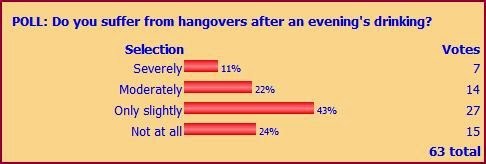In 1989, after strenuous lobbying by CAMRA, the government of the day brought in the Beer Orders, which were widely expected to usher in a new era of competition and diversity in the pub trade. In one sense that has happened, with more breweries producing more beers in more styles than at any time in living memory. But, on the other hand, they precipitated a drastic restructuring of the industry and led to the rise of the giant, debt-fuelled pub companies, which are widely felt to exert a negative influence on the market. So the eventual outcome was very much a mixed blessing, and probably one that nobody foresaw at the time.
This week there was a vote in Parliament as part of the discussion of the government’s planned code for regulating pub companies to allow tenants and lessees of major brewers and pubcos to have a mandatory free-of-tie option at an independently assessed market rent. This was celebrated by CAMRA and others as a major step forward to free up the market and give tenants a fair deal. But will it really make all that much difference, and is there a danger there will end up being more downsides than upsides? Christopher Snowdon and Allister Heath certainly think there might be.
The pubco business model is based on charging tenants more than the market price for beer and other drinks bought from the pubco – the “wet rent”, in return for a lower than market “dry rent” for the property, and general support and advice about how to run the business. It gives people a relatively easy and low-cost route into self-employment and spreads the risks and rewards between landlord and tenant. For many people, this works well enough, but others have felt that they have been badly treated by the pubcos, subject to unreasonable rent increases, and that the support they’re given isn’t remotely worth the implicit price they pay.
So for some the market rent option may well seem attractive. However, it is inevitably going to be considerably higher than a tied rent, so it won’t necessarily suit everyone, especially those with low beer volumes or little confidence about buying on the open market. It also transfers all the risk of running the business from pubco to tenant, so all the pubco is interested in is whether the rent is paid. This means that the pubco has effectively moved from the pubs business to the property business, and it wouldn’t really matter to them if the pub was converted to a supermarket or a block of flats, as they no longer have a financial stake in it remaining as a pub.
Given that they campaigned against it, it is fair to assume that the large pubcos believe that the market rent option will damage their business, so it is inevitable that they will seek to take steps to mitigate the impact. An obvious one is to transfer more of the high-performing pubs – which would be most attractive to run under an MRO – to direct management. They could investigate other kinds of business arrangement such as franchise agreements, and sub-letting groups of pubs to multiple operators. Or they could break themselves up into smaller units that would no longer come within the scope of the code.
The plans also involve giving the responsibility for setting market rents to independent assessors, which is almost guaranteed to end up being a source of argument and ill-feeling. It’s also generally the case that if rents are set by tribunals rather than the market it tends to reduce the supply of available property. Property owners may not wish to run the risk of getting involved in time-consuming disputes. Another aspect of the proposals is that pub companies that are also brewers, such as Greene King and Marston’s, will still be able to insist that tenants stock their products, but they will be able to buy them on the open market. You can’t really see that ending well.
Now I can’t say I’ve read every single detail of the proposals, and they’re still a long way from reaching the statute book, so I may not have got everything right. But I think it’s fair to say that they won’t bring about the dramatic liberalisation of the market that some seem to believe, and the takeup of the market rent option may be fairly slow. It might give an attractive opportunity to confident and enterprising lessees, but it’s hard to see the ownership of chains of unbranded free-of-tie rented pubs making much sense as a long-term business model, and there must be a major risk that the various issues I’ve outlined above will overall make owning and running pubs a less attractive business to be in.
It’s also notable how most of the anti-pubco campaigners are strangely reluctant to put forward any alternative vision for the structure of the pub trade. They seem to have a kind of naive, nostalgic vision of pubs being run by stand-alone freetraders, which is about as realistic as harking back to the days of the independent corner shop. Some of the lunatic fringe even talk of pubs being taken over by the State and run as community facilities.
And it would be interesting to know how many of the self-proclaimed champions of pubs who have been crowing about this were silent when the smoking ban was being debated.















